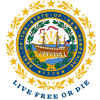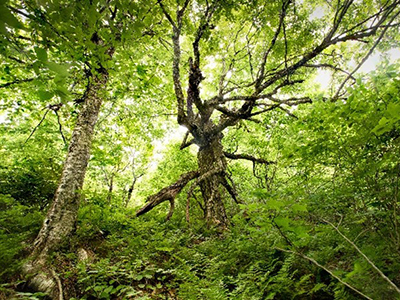Visiting Biodiversity
Information about what biodiversity is and Natural Heritage Bureau works to maintain it including specific examples.
Why Conserve Biodiversity?
Biodiversity is the variety and variability of all living organisms. It includes whole organisms, their genes, the natural communities in which they live, and the complex interactions among and between organisms and their physical environment. Certain components of biodiversity, such as species or natural communities that have limited distributions, are a focal point for conservation.
New Hampshire's native plants and natural communities provide wildlife with habitat and food sources necessary for survival. The diversity of native plants and natural communities benefits people directly through values such as forest products, medicine, and recreation, and indirectly through ecosystem services such as erosion control and water quality improvement. People also value biodiversity simply for the fact that it exists, and the pleasure of experiencing natural beauty.
The biodiversity in a given area decreases when species suffer local extirpations, when invasive species displace native ones, and when natural habitats are fragmented and destroyed. Conserving the native plants of New Hampshire, especially rare species, is important to maintaining the health of native ecosystems and the natural environment.
How Does NHB Conserve Biodiversity?
The NH Natural Heritage Bureau facilitates protection of the state’s native biodiversity by providing information about key areas that support rare species and high-quality examples of natural communities.
The foundation for successful biodiversity protection is maintaining a series of representative examples of all the state's natural community types. Conserving these communities will also protect the species they contain and their underlying ecological processes. A good strategy for this kind of protection would be to conserve a series of connected, high quality natural community types; this series would ensure that ecological processes that connect natural communities remain functionally intact within a broader landscape context.
Long-term protection of New Hampshire's species, natural communities, and ecological processes requires a variety of conservation approaches. The goal of NHB is to inform management decisions by identifying those sites that have a relatively greater potential for maintaining the natural diversity within the state.
Where Can I Visit In New Hampshire To See Good Examples Of Biodiversity?
NHB offers the Visiting NH’s Biodiversity series of interpretive trail guide brochures and profiles. At selected sites, visitors can see and experience good examples of the special biodiversity elements that we keep track of, including natural features such as the state’s old forests, rare or unusual plants, exemplary natural communities and ecosystems, and remarkable wetlands.
Visit our brochures and profiles page to view interpretive trail guide brochures and profiles at selected sites in New Hampshire.
What Is The Conservation License Plate Program?
The Conservation License Plate program (NH Moose Plates) promotes, protects, and invests in New Hampshire's natural, cultural, and historic resources. Through funding received from this program, NHB has produced a variety of products designed to educate the public about the state's biodiversity including the beautiful and informative 341-page book The Nature of New Hampshire that describes the state’s natural communities and environment.





